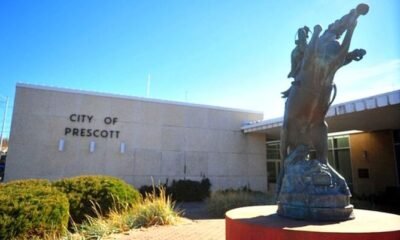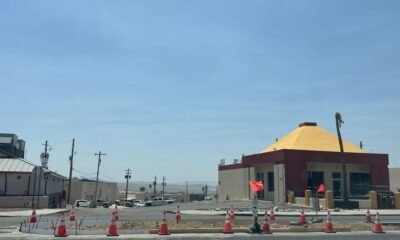Business
City Council to Explore Annexing 3,422 Acres into Sedona on December 10

The Sedona City Council is slated to deliberate on a significant annexation proposal during a meeting scheduled for 4:30 p.m. on Tuesday, December 10. The focal point of the discussion will be the potential annexation of approximately 3,422 acres, encompassing the city’s Wastewater Treatment Plant and adjacent city-owned land known as “the Dells.” This item ranks fifth on the council’s agenda for the evening.
City staff assert that annexing the Wastewater Treatment Plant property is essential for facilitating the development of a new transit maintenance and operations facility. Furthermore, it aims to refine the city’s planning area boundaries. Notably, Sedona’s jurisdictional limits have remained unchanged since its incorporation in 1988.
If the annexation goes forward, Sedona and Cottonwood would be positioned less than a mile apart at their closest points, approximately 5,100 feet. This development underscores the need for careful consideration of both city plans and community impact.
The annexation must adhere to the stipulations outlined in Arizona Revised Statute §9-471, which mandates certain criteria for contiguity, size, and shape. This legal framework prevents the city from annexing only a narrow stretch of land leading to the Wastewater Treatment Plant, ensuring a coherent boundary for city expansion.
The process involves several steps: first, a map and legal description of the annexation area must be prepared. Additionally, the city will request property ownership and assessed value data from the Yavapai County Assessor’s Office and the Arizona Department of Revenue. Following this, a blank annexation petition will be filed, kicking off a mandatory 30-day waiting period.
During this interval, the city will publish notices of a public hearing in local papers and conspicuous locations within the annexation area. This outreach includes notifying property owners about the proposed annexation in advance of the hearing, which is critical for community engagement.
Further, the city must devise a plan outlining how necessary services and infrastructure will be managed for anticipated growth in the newly annexed area over the next decade. Within a year post-hearing, city officials will need to collect signatures from property owners within the annexation zone to validate the petition.
The City Council retains the authority to halt the annexation at any phase in this multi-step procedure. As indicated in the agenda, there are currently no assessed real properties within the proposed area subjected to city taxation, only personal property. This underscores the fiscal implications of the proposed change and its potential impact on local governance.












![Bryan Merritt, 36, was arrested June 26 after allegedly trying to break into his estranged grandfather’s home in Homestead. [PCSO]](https://arizonanews.org/wp-content/uploads/2025/07/Break-In-or-Breakthrough-Man-Arrested-During-Family-Reunion-Gone-Awry-80x80.jpeg)





